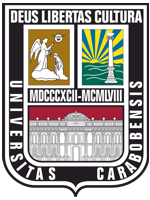Generaciones de derechos humanos y su implementación en los sistemas jurídicos modernos: investigación científica moderna e implicaciones para la enseñanza
DOI:
https://doi.org/10.46502/issn.1856-7576/2025.19.01.8Palabras clave:
enseñanza, generaciones de derechos, justicia social, desarrollo sostenible, mecanismos legales, sociedad civilResumen
El análisis de los desafíos contemporáneos, como los derechos de los pueblos indígenas, el derecho al desarrollo y los derechos de las generaciones futuras, confirma la necesidad de revisar la clasificación tradicional y desarrollar un enfoque más integral para la implementación de los derechos humanos en el siglo XXI. Esto también resalta la relevancia del tema de investigación. El propósito de este artículo es analizar las generaciones de derechos humanos y su implementación en los sistemas jurídicos modernos. La metodología de investigación incluye métodos como el análisis de políticas jurídicas, el análisis comparativo y la investigación empírica. El artículo examina el concepto de generaciones de derechos humanos y los detalles de su implementación en los sistemas jurídicos contemporáneos. Analiza el desarrollo histórico de los derechos humanos desde la Declaración de los Derechos del Hombre y del Ciudadano y la Carta de Derechos hasta los documentos internacionales modernos, como la Declaración Universal de Derechos Humanos, los Pactos Internacionales de la ONU y la Declaración de los Derechos de los Pueblos Indígenas. Se presta especial atención a la crítica de la teoría de las tres generaciones de los derechos humanos y su adaptación a los desafíos modernos, específicamente a través de la expansión del concepto de derechos de la humanidad como derechos de tercera generación. El estudio explora los mecanismos jurídicos para garantizar los derechos humanos en contextos internacionales y nacionales, incluida la Unión Europea, las Naciones Unidas y los acuerdos regionales. Como resultado del estudio, se concluye que existe la necesidad de revisar la clasificación tradicional de las generaciones de derechos humanos, teniendo en cuenta los desafíos contemporáneos y los procesos de globalización. El artículo analiza los mecanismos para implementar los derechos humanos en los sistemas jurídicos de diferentes países y propone formas de mejorar las normas jurídicas internacionales para garantizar el desarrollo sostenible y la justicia social.
Citas
Ashley, K. D. (2017). Artificial Intelligence and Legal Analytics: New Tools for Law Practice in the Digital Age. Cambridge University Press. Retrieved from https://acortar.link/sjjLIv
Barrows, H. S. (1986). A taxonomy of problem-based learning methods. Medical Education, 20(6), 481–486. Retrieved from https://doi.org/10.1111/j.1365-2923.1986.tb01386.x
Batan, Yu. D. (2018). The Problem of Collective Rights. Problems of Modern Constitutionalism. Kyiv: Yurinkom Inter. Retrieved from https://acortar.link/TrpDAK
Baxi, U. (2012). The Future of Human Rights (3rd ed.). Oxford University Press. Retrieved from https://pure.jgu.edu.in/id/eprint/3153/1/43953657.pdf
Bill of Rights. (1791). United States Bill of Rights. Retrieved from https://www.archives.gov/files/legislative/resources/education/bill-of-rights/images/handout-3.pdf
Bower, M., Howe, C., McCredie, N., Robinson, A., & Grover, D. (2014). Augmented Reality in education—cases, places and potentials. Educational Media International, 51(1), 1–15. Retrieved from https://doi.org/10.1080/09523987.2014.889400
Bratko, I. V. (2017). Human rights in the context of sustainable development. European and international approaches to the protection of human rights, 1, 89–94. Retrieved from https://elibrary.kubg.edu.ua/id/eprint/19762/1/I_Bratko_Konf_07_04_2017_FPMV.pdf
Cornescu, A.V. (2009). The Generations of human’s rights. Brno: Masaryk University. Retrieved from https://acortar.link/9ebHjC
Council of Europe. (2018). The Right of Older Persons to Dignity and Autonomy in Care. Retrieved from https://www.coe.int/en/web/commissioner/-/the-right-of-older-persons-to-dignity-and-autonomy-in-care
De Feyter, K. (2011). Human Rights: Social Justice in the Age of the Market. Zed Books. Retrieved from https://www.bloomsbury.com/in/human-rights-9781848131446/
Deterding, S., Dixon, D., Khaled, R., & Nacke, L. (2011). From game design elements to gamefulness: defining "gamification". In Proceedings of the 15th International Academic MindTrek Conference: Envisioning Future Media Environments (pp. 9–15). ACM. Retrieved from https://doi.org/10.1145/2181037.2181040
Domaradzki, S., Khvostova, M., & Pupovac, D. (2019). Karel Vasak’s Generations of Rights and the Contemporary Human Rights Discourse. Human Rights Review, 20, 423–443. Retrieved from https://doi.org/10.1007/s12142-019-00565-x
Donnelly, J. (2013). Universal Human Rights in Theory and Practice (3rd ed.). Cornell University Press. Retrieved from https://www.cornellpress.cornell.edu/book/9780801477706/universal-human-rights-in-theory-and-practice/
EIFEC. (2024). Export Controls Laws converging towards more attention to the protection of Human Rights. Retrieved from https://www.eifec.org/human-rights-compliance
European Parliament. (2018). Indivisibility of human rights: Unifying the two Human Rights Covenants? Retrieved from Retrieved from https://www.europarl.europa.eu/thinktank/en/document/EPRS_ATA(2018)628296
European Union. (2025). Priorities for UN Human Rights Fora in 2025. Retrieved from https://www.eeas.europa.eu/delegations/un-geneva/eu-priorities-un-human-rights-fora-2025_en
Fantin, N. (2022). The Human Rights System Series: Generations of Rights - The Route to the System. Arcadia. Retrieved from https://www.byarcadia.org/post/the-human-rights-system-101-generations-of-rights-the-route-to-the-system
Fredman, S. (2006). Human Rights Transformed: Positive Duties and Positive Rights. Oxford: Oxford Legal Studies. Retrieved from https://ssrn.com/abstract=923936
Freeman, M. (2011). Human Rights: An Interdisciplinary Approach (2nd ed.). Polity Press. Retrieved from https://www.amazon.com/Human-Rights-Interdisciplinary-Michael-Freeman/dp/0745639666
Hew, K. F., & Lo, C. K. (2018). Flipped classroom improves student learning in health professions education: a meta-analysis. BMC Medical Education, 18, 38. Retrieved from https://doi.org/10.1186/s12909-018-1144-z
IHRB. (2024). Top Ten Business and Human Rights Issues in 2025. Retrieved from https://www.ihrb.org/latest/2025-top-10-business-and-human-rights-issues
Ivankiv, I. B. (2019). Human rights: state and prospects for their provision. (Degree thesis) National University of Kyiv-Mohyla Academy, Kyiv. Retrieved from https://ekmair.ukma.edu.ua/items/8e528109-90fb-4cbe-ad0f-c5b57e72279f
Jensen, S. L.V. (2018). Putting to rest the Three Generations Theory of human rights. Universal right group. Retrieved from https://www.universal-rights.org/putting-rest-three-generations-theory-human-rights/
Johnson, L., Adams Becker, S., Estrada, V., & Freeman, A. (2016). NMC Horizon Report: 2016 Higher Education Edition. The New Media Consortium. Retrieved from https://library.educause.edu/resources/2016/2/2016-horizon-report
Keppell, M., Souter, K., & Riddle, M. (2012). Physical and Virtual Learning Spaces in Higher Education: Concepts for the Modern Learning Environment. IGI Global. Retrieved from https://doi.org/10.4018/978-1-60960-114-0
Klabbers, J. (2017). International Law (2nd ed.). Cambridge University Press. Retrieved from https://www.amazon.com/International-Law-2nd-Jan-Klabbers/dp/1316506606
Laurillard, D. (2012). Teaching as a Design Science: Building Pedagogical Patterns for Learning and Technology. Routledge. Retrieved from Retrieved from https://doi.org/10.4324/9780203125083
Law 1469-VIII. On the Ratification of Paris Agreement. The Verkhovna Rada of Ukraine, 2016. Retrieved from https://zakon.rada.gov.ua/laws/show/995_l61#Text
Magnovsky, I. Y., Shevchuk, V. V., & Berezovenko, L. S. (2024). Human rights as third generation rights: challenges of the present. Legal system: theory and practice, 1, 75-83. Retrieved from http://sulj.oduvs.od.ua/archive/2024/1/14.pdf
National Assembly of France. (1789). Declaration of the Rights of Man. Retrieved from http://avalon.law.yale.edu/18th_century/rightsof.asp
O’Connell, M. E. (2017). International Law and the Use of Force: Cases and Materials. Foundation Press. ISBN: 9781647082444
Office of high commissioner. (2025). United Nation Human rights appeal. Retrieved from https://www.ohchr.org/sites/default/files/documents/publications/annualappeal/United-Nations-Human-Rights-Appeal-2025.pdf
Office of the High Commissioner for Human Rights (2023). Key concepts on ESCRs - Are economic, social and cultural rights fundamentally different from civil and political rights? Available at: Retrieved from https://www.ohchr.org/en/human-rights/economic-social-cultural-rights/escr-vs-civil-political-rights
Organization of African Unity (OAU). (1982). African Charter on Human and Peoples' Rights ("Banjul Charter"). Retrieved from https://www.refworld.org/legal/agreements/oau/1981/en/17306
Reid, L. (2019). The Generations of Human Rights – UAB Institute for Human Rights Blog. Sites.uab.edu. Retrieved from https://sites.uab.edu/humanrights/2019/01/14/the-generations-of-human-rights/
Sen, A. (2004). Elements of a Theory of Human Rights. Philosophy & Public Affairs, 32(4), 315–356. Retrieved from https://doi.org/10.1111/j.1088-4963.2004.00017.x
Smith, R. K. M. (2019). Textbook on International Human Rights. Oxford University Press. ISBN 0198746210, 9780198746218
Tibbitts, F. (2002). Understanding What We Do: Emerging Models for Human Rights Education. International Review of Education, 48(3-4), 159–171. DOI: 10.1023/A:1020338300881
Tyryna, M. (2011). Generations of human rights: problems of modern classification. State and law, 52, 728–732. Retrieved from http://dspace.nbuv.gov.ua/bitstream/handle/123456789/34078/118-Tyrina.pdf?sequence=1
UN General Assembly. (1948). Universal Declaration of Human Rights, 217 A (III). Retrieved from https://www.un.org/en/development/desa/population/migration/generalassembly/docs/globalcompact/A_RES_217(III).pdf
UN General Assembly. (1966a). International Covenant on Civil and Political Rights. Retrieved from https://www.ohchr.org/Documents/ProfessionalInterest/ccpr.pdf
UN General Assembly. (1966b). International Covenant on Economic, Social, and Cultural Rights. Retrieved from https://www.ohchr.org/Documents/ProfessionalInterest/cescr.pdf
UN General Assembly. (1972). Declaration of the United Nations Conference on the Human Environment (Stockholm Declaration). Retrieved from https://www.un.org/en/conferences/environment/stockholm1972
UN General Assembly. (1986). Declaration on the Right to Development. Retrieved from https://www.ohchr.org/en/instruments-mechanisms/instruments/declaration-right-development
UN General Assembly. (1992). Rio Declaration on Environment and Development. Retrieved from https://acortar.link/Qz9vOT
United Nations. (1993). Vienna Declaration and Programme of Action Vienna Declaration and Programme of Action Adopted by the World Conference on Human Rights in Vienna on 25 June 1993. Retrieved from https://www.ohchr.org/en/instruments-mechanisms/instruments/vienna-declaration-and-programme-action
United Nations. (2007). United Nations Declaration on the Rights of Indigenous Peoples. Retrieved from https://www.un.org/esa/socdev/unpfii/documents/DRIPS_en.pdf
Vasak, K. (1977). Human Rights: A Thirty-Year Struggle: the Sustained Efforts to Give Force of Law to the Universal Declaration of Human Rights. UNESCO Courier, 30(11), 29–32. Retrieved from https://unesdoc.unesco.org/ark:/48223/pf0000048063
Descargas
Publicado
Cómo citar
Número
Sección
Licencia
Derechos de autor 2025 Yurii Hotsuliak, Mariana Hartman, Yurii Batan, Anna Hryb, Nataliia Baadzhy

Esta obra está bajo una licencia internacional Creative Commons Atribución 4.0.















